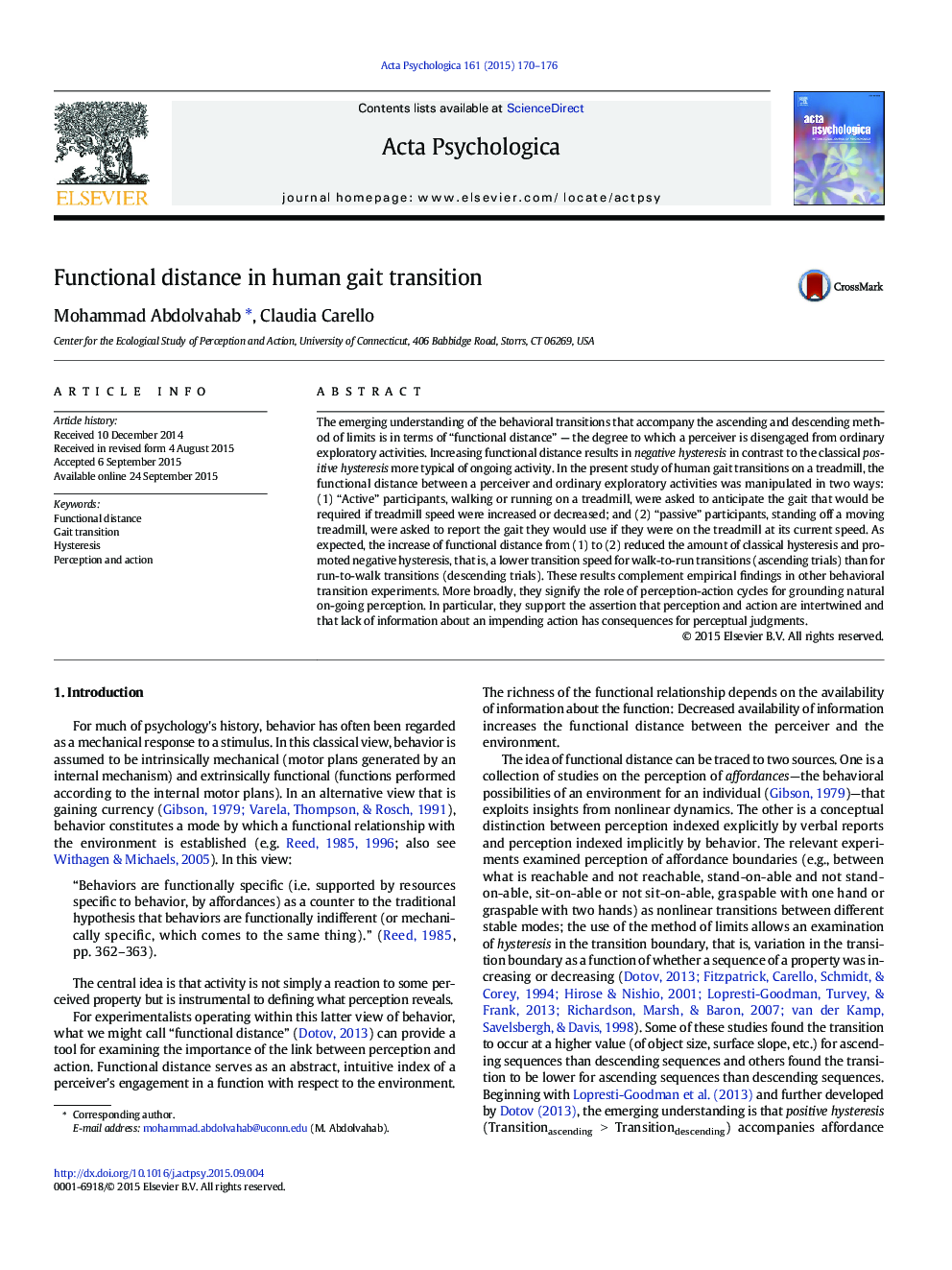| کد مقاله | کد نشریه | سال انتشار | مقاله انگلیسی | نسخه تمام متن |
|---|---|---|---|---|
| 7277274 | 1473597 | 2015 | 7 صفحه PDF | دانلود رایگان |
عنوان انگلیسی مقاله ISI
Functional distance in human gait transition
ترجمه فارسی عنوان
فاصله عملکردی در گذار از راه رفتن انسان
دانلود مقاله + سفارش ترجمه
دانلود مقاله ISI انگلیسی
رایگان برای ایرانیان
کلمات کلیدی
فاصله عملکردی، گذرگاه قدم زدن، هیسترزیس، ادراک و عمل،
موضوعات مرتبط
علوم زیستی و بیوفناوری
علم عصب شناسی
علوم اعصاب شناختی
چکیده انگلیسی
The emerging understanding of the behavioral transitions that accompany the ascending and descending method of limits is in terms of “functional distance” - the degree to which a perceiver is disengaged from ordinary exploratory activities. Increasing functional distance results in negative hysteresis in contrast to the classical positive hysteresis more typical of ongoing activity. In the present study of human gait transitions on a treadmill, the functional distance between a perceiver and ordinary exploratory activities was manipulated in two ways: (1) “Active” participants, walking or running on a treadmill, were asked to anticipate the gait that would be required if treadmill speed were increased or decreased; and (2) “passive” participants, standing off a moving treadmill, were asked to report the gait they would use if they were on the treadmill at its current speed. As expected, the increase of functional distance from (1) to (2) reduced the amount of classical hysteresis and promoted negative hysteresis, that is, a lower transition speed for walk-to-run transitions (ascending trials) than for run-to-walk transitions (descending trials). These results complement empirical findings in other behavioral transition experiments. More broadly, they signify the role of perception-action cycles for grounding natural on-going perception. In particular, they support the assertion that perception and action are intertwined and that lack of information about an impending action has consequences for perceptual judgments.
ناشر
Database: Elsevier - ScienceDirect (ساینس دایرکت)
Journal: Acta Psychologica - Volume 161, October 2015, Pages 170-176
Journal: Acta Psychologica - Volume 161, October 2015, Pages 170-176
نویسندگان
Mohammad Abdolvahab, Claudia Carello,
